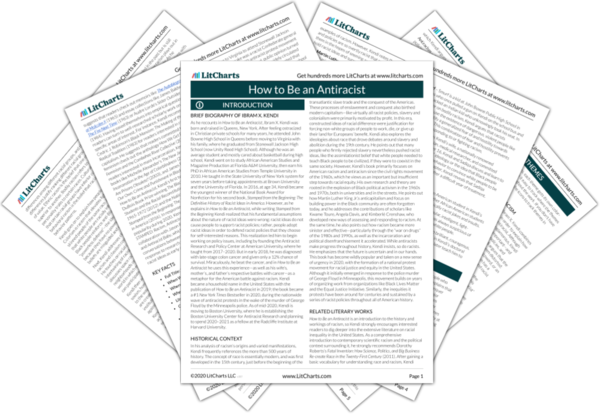With his of counterexample comparing Black and non-Black immigrants, Kendi points out that comparing Black immigrants to African American people says nothing about Black people’s equity with
other groups in the United States. Instead, it just proves that there are variations in achievement between different ethnicities within the umbrella of the Black race. The principle of immigrant self-selection might seem like a stereotype, but it’s borne out by evidence, and it clearly explains the observed effect. It doesn’t make logical sense to say that Black people are hardworking, because someone’s race tells us nothing about their personal qualities. Someone’s decision to emigrate, on the other hand, does: since they are making a difficult, deliberate choice to improve their lives, they’re likely to be willing to do other difficult things to improve their lives. However, Kendi emphasizes that their higher rates of achievement do not make them
superior to non-immigrants—rather, he thinks that all human beings are inherently valuable.


